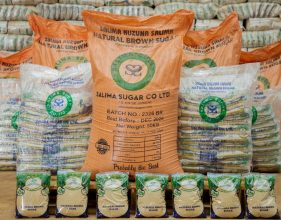Kwacha mixed fortunes
Despite remaining steady against the US dollar and Euro, kwacha lost value against pound in September 2018, Reserve Bank of Malawi (RBM) statistics show.
RBM September 2018 Monthly Economic Report indicates that the local currency traded at K732.51 per US dollar and K852.15 per Euro while shedding 1.1 percent against the pound to trade at K961.05.

The depreciation was explained by a firmer pound due to improved investor confidence as the UK anticipates a favourable outcome from the Brexit negotiations.
In the Asian region, the kwacha emerged stronger than most of the currencies on account of weakening of most emerging market currencies due to spill-over effects of the trade war between China and US.
Consequently, the local currency gained by 2.0 percent against both the Japanese yen and Indian rupee to trade at K6.41 per yen and K10.02 against Indian rupee, respectively. Similarly, the kwacha firmed up against the Chinese yuan by 0.6 percent and traded at K105.68.
In the Sadc region, the local currency depreciated by 6.4 percent against the rand to trade at K52.92 per rand on account of an anticipated hike in the repurchase rate by the South African Reserve Bank (Sarb).
Against the Zambian kwacha, the local currency gained by 16.5 percent and traded at K59.37 per Zambian kwacha. The appreciation of the domestic currency was explained by a weaker Zambian kwacha due to increased demand for foreign exchange in Zambia and the general strengthening of the dollar among other factors
Earlier this month, investment management and advisory firm, Alliance Capital, said pressure had started mounting on the local trading unit, the kwacha, as the country passes through the lean foreign exchange period.
In its October 2018 Economic Report, Alliance Capital said the it expected volatility to persist on the kwacha-rand and kwacha-sterling pairs albeit with a depreciating bias
“The tobacco market is closed and we are in the lean period, therefore we expect the kwacha to continue depreciating. We forecast the kwacha to close the month of November trading at a mid-rate of K730 per dollar,” the report said.
The kwacha largely remained stable for the past 24 months to September against major foreign currencies due to what authorities said is fiscal discipline and efforts by the RBM to absorb excess liquidity from the banking system well as maintenance of positive real interest rates.
According to the Central bank, this is the longest period the kwacha has been allowed to trade according to demand and supply.
RBM spokesperson Mbane Ngwira earlier said the central bank is targeting six months of imports in the medium-term with inflation rate at five percent by 2020.





